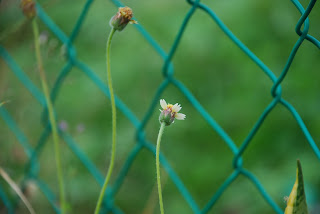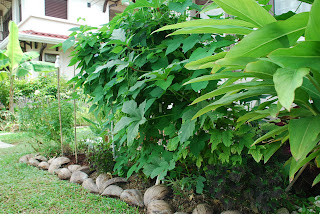a bittergourd which is the last, winged beans and okra.
The two big and long okra are hard and seedy, and I dont think kakdah will include them in her cooking. I guess they are matured enough to be saved and dried for seeds. Winged beans are in abundance now.
The two big and long okra are hard and seedy, and I dont think kakdah will include them in her cooking. I guess they are matured enough to be saved and dried for seeds. Winged beans are in abundance now.
a close-up
kerabu kelisa
This salad has its own charm, colourful and tasty. Winged beans, young mango, tomato, carrots, red chili, and onions are thinly sliced and mixed. Then add salt and lemon juice. There is no specific amount of each, just add things and check for look and taste to your liking. It will take any lunch and dinner to a different height!
This salad has its own charm, colourful and tasty. Winged beans, young mango, tomato, carrots, red chili, and onions are thinly sliced and mixed. Then add salt and lemon juice. There is no specific amount of each, just add things and check for look and taste to your liking. It will take any lunch and dinner to a different height!
bangchik and kakdah's menu





















































